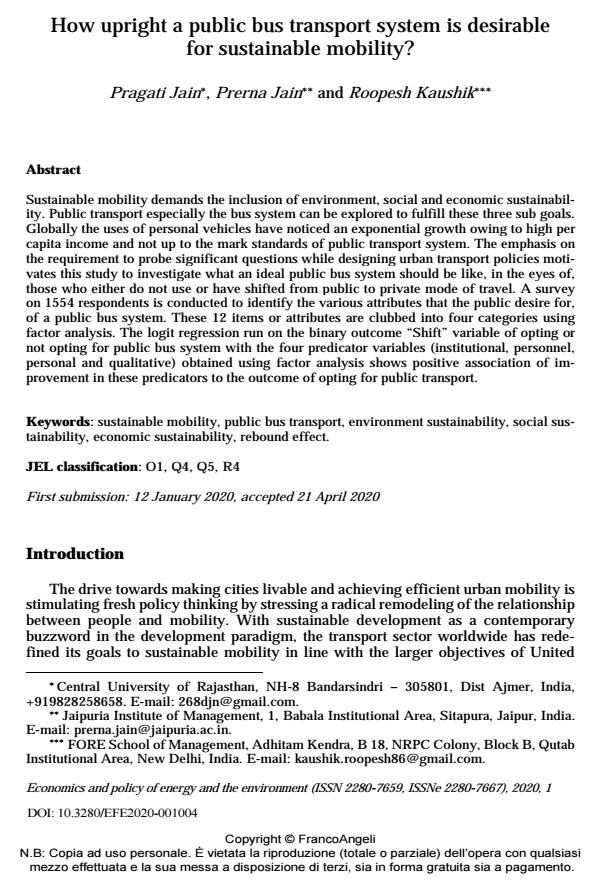How upright a public bus transport system is desirable for sustainable mobility?
Titolo Rivista ECONOMICS AND POLICY OF ENERGY AND THE ENVIRONMENT
Autori/Curatori Pragati Jain, Prerna Jain, Roopesh Kaushik
Anno di pubblicazione 2020 Fascicolo 2020/1
Lingua Inglese Numero pagine 15 P. 47-61 Dimensione file 199 KB
DOI 10.3280/EFE2020-001004
Il DOI è il codice a barre della proprietà intellettuale: per saperne di più
clicca qui
Qui sotto puoi vedere in anteprima la prima pagina di questo articolo.
Se questo articolo ti interessa, lo puoi acquistare (e scaricare in formato pdf) seguendo le facili indicazioni per acquistare il download credit. Acquista Download Credits per scaricare questo Articolo in formato PDF

FrancoAngeli è membro della Publishers International Linking Association, Inc (PILA)associazione indipendente e non profit per facilitare (attraverso i servizi tecnologici implementati da CrossRef.org) l’accesso degli studiosi ai contenuti digitali nelle pubblicazioni professionali e scientifiche
Sustainable mobility demands the inclusion of environment, social and economic sustainabil-ity. Public transport especially the bus system can be explored to fulfill these three sub goals. Globally the uses of personal vehicles have noticed an exponential growth owing to high per capita income and not up to the mark standards of public transport system. The emphasis on the requirement to probe significant questions while designing urban transport policies moti-vates this study to investigate what an ideal public bus system should be like, in the eyes of, those who either do not use or have shifted from public to private mode of travel. A survey on 1554 respondents is conducted to identify the various attributes that the public desire for, of a public bus system. These 12 items or attributes are clubbed into four categories using factor analysis. The logit regression run on the binary outcome "Shift" variable of opting or not opt-ing for public bus system with the four predicator variables (institutional, personnel, personal and qualitative) obtained using factor analysis shows positive association of improvement in these predicators to the outcome of opting for public transport.
Parole chiave:Sustainable mobility, public bus transport, environment sustainability, social sus-tainability, economic sustainability, rebound effect.
Jel codes:O1, Q4, Q5, R4
Pragati Jain, Prerna Jain, Roopesh Kaushik, How upright a public bus transport system is desirable for sustainable mobility? in "ECONOMICS AND POLICY OF ENERGY AND THE ENVIRONMENT" 1/2020, pp 47-61, DOI: 10.3280/EFE2020-001004